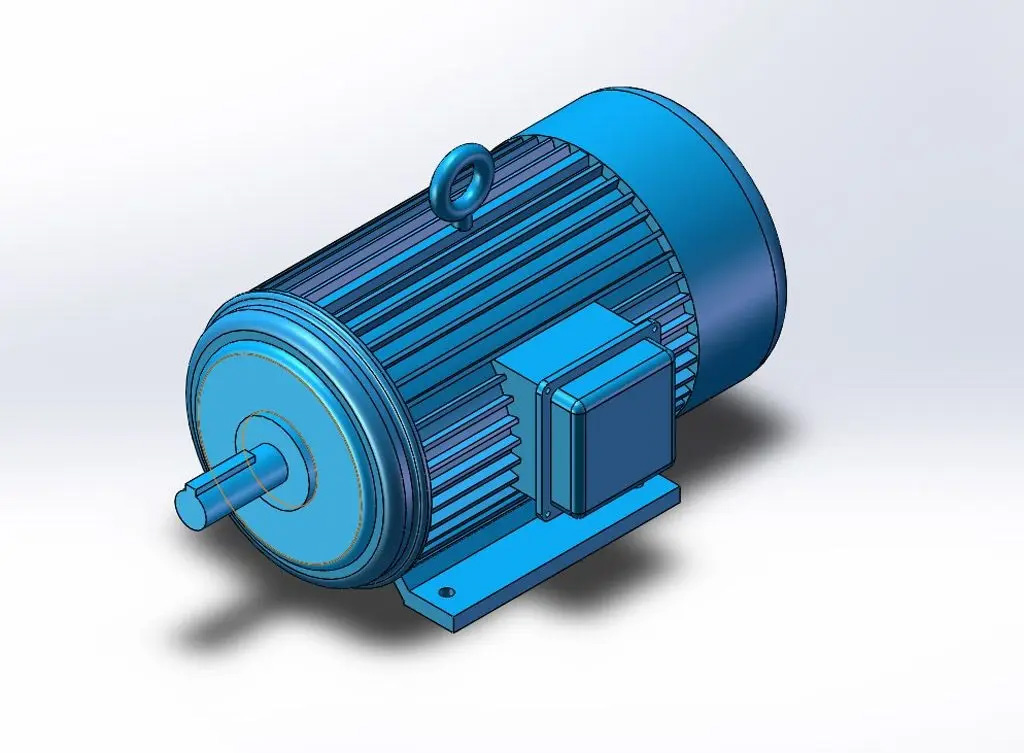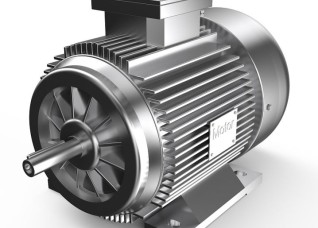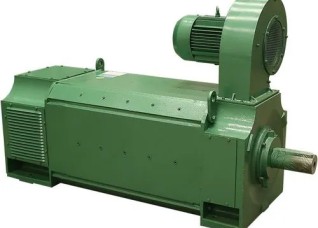Difference of Various Types of Motors
A motor, as the name suggests, is a device that converts electrical and mechanical energy. Any motor can operate as a motor or as a generator. It does not generate energy itself, but only realizes the conversion of electromechanical energy, but the loss in the conversion process will be converted into heat, so any motor Design includes electromagnetic design, mechanical design and thermal design. We pay more attention to electrical power, mechanical power, loss and efficiency, temperature and other performance parameters.
Depending on the structure and application, there are many types of motors. However, the main ones used in the current automobile drive are permanent magnet synchronous motors, asynchronous motors (induction motors), switched reluctance motors, electric excitation motors, and DC motors. At this point, everyone can’t help but pay attention to what are the differences between these motors, and what are the advantages and disadvantages of each? Let’s make a simple popular science here.

DC motor
The DC motor is the oldest invention in the motor family. Its inventor is Faraday. The traditional DC motor is mainly composed of the armature winding on the rotor, the excitation winding on the stator, the stator and rotor cores, the frame and the brush-commutator. , the excitation winding provides the excitation magnetic field, and the armature winding provides the current that produces the torque.
The DC motor has an excitation winding and an armature winding. The size of the magnetic field can be controlled by controlling the current of the excitation winding, and the torque can be adjusted by controlling the current of the armature winding. Therefore, the biggest advantage of the DC motor is that the control performance is good, and it can be controlled only by external The variable resistor can adjust the output speed and torque of the motor almost linearly.
However, due to the existence of the brush, the reliability is low, the maintenance cost is high, and the additional loss caused by the contact resistance of the brush and the external resistance is large, and the motor efficiency is relatively low. At present, the newly developed electric vehicles basically no longer use brushed DC motors, which are generally only used in places such as window lifts, driving wipers, etc., and there is a tendency to use electronic commutators to replace brush commutators.
Induction motor
The inventor of the induction motor is Tesla. Generally, the stator core is buried with three-phase AC windings, and the rotor is composed of the iron core and the short-circuited cage windings. When the three-phase AC is passed through the stator winding, a combined space will be generated The rotating magnetic field is synchronously rotated, and the rotor winding is cut to generate a current in the rotor cage winding.
Because there is no need for brushes on the rotor, the structure is simple, the reliability is good, and the production technology is relatively mature, so it is widely used in industrial production. Now it is used in some passenger cars, but due to its low power density and complex control, it is rarely used in passenger cars. Tesla Motor used the induction of copper bar squirrel cages in its early products to commemorate this great scientist. However, due to its overall efficiency, power density and other performances, it is still unable to compare with rare earth permanent magnet motors. The latest Model 3 has switched to permanent magnet synchronous motors as drive motors.
Conventional Synchronous Motors and Permanent Magnet Synchronous Motors
The stator structure of the synchronous motor is the same as that of the previous induction motor. It belongs to the AC motor. Only the stator winding passes through the symmetrical AC current, which will generate a certain rotating magnetomotive force in the air gap. The difference from the asynchronous motor is that its rotor speed is consistent with the speed of the rotating magnetic field.
The rotor salient pole is wound with a wound excitation winding and is drawn out through the slip ring and brush on the shaft. That is, its excitation magnetomotive force is provided by an external direct current. Therefore, its control performance is relatively good, and the power factor and efficiency can be relatively high. However, because an external exciter is required, the size is large, and the brush slip ring needs regular maintenance, so this type of motor is mostly used in power plant generators, and it is relatively rare in automobiles.
The most used in new energy vehicles is the permanent magnet synchronous motor. The difference from the previous one is that the rotor core has no windings, only surface-mounted or built-in permanent magnets. Electromechanical energy conversion occurs due to the action of a rotating magnetic field.
Because the speed of the car needs to be adjusted frequently, the speed of the motor is designed to be relatively high, so the permanent magnet synchronous motor with built-in magnetic steel on the right is more advantageous because of its good mechanical strength, and it has a relatively high magnetic force for this kind of motor with built-in magnetic steel. The resistance torque is more conducive to saving the amount of magnetic steel and improving the field weakening performance.
Switched Reluctance Motor
The reluctance motor is a motor with a new structure. There is neither winding nor permanent magnet material on the rotor, but a solid structure of salient poles stacked by silicon steel sheets. It is based on the principle of minimum reluctance (the magnetic flux must always be closed along the path with the smallest reluctance). By switching the energization sequence of the windings on the salient poles of the stator, the rotor continuously moves to the position with the smallest reluctance, thereby driving the rotor to rotate.
The magnetoresistive structure is simple, firm, reliable, low cost, and has great potential for development. Therefore, it has developed rapidly in the field of traction speed regulation in recent years. However, due to its inherent torque fluctuation and obvious vibration and noise, it is currently Only used in some passenger cars.
At present, there are also some new hybrid excitation type reluctance motors. Usually, a certain ferrite permanent magnet material is inserted into the rotor reluctance slot, so that the performance of the motor is higher than that of the reluctance motor due to the introduction of a part of the permanent magnet torque. , and the cost is not as high as rare earth permanent magnet motors.
This article introduces some of our common motors. In a word, DC motors are gradually eliminated due to their poor reliability and average performance; the control technology of switched reluctance motors is not yet mature, and the noise and vibration are obvious at low speeds, and the efficiency is also low. It belongs to the future alternative; the induction motor rotor has copper consumption on the secondary side, serious heat generation, low efficiency, and large volume, and is often suitable for applications in passenger cars that do not have strict volume requirements; the electric excitation synchronous motor system is large in size, and the electrical Brushed slip rings require maintenance and have reliability concerns, and are currently rare other than as generators.






